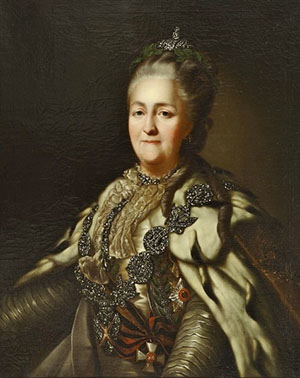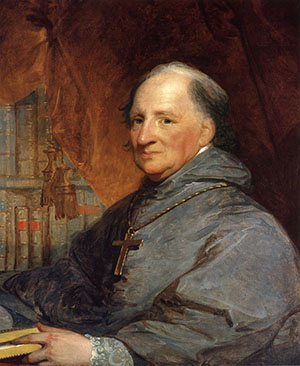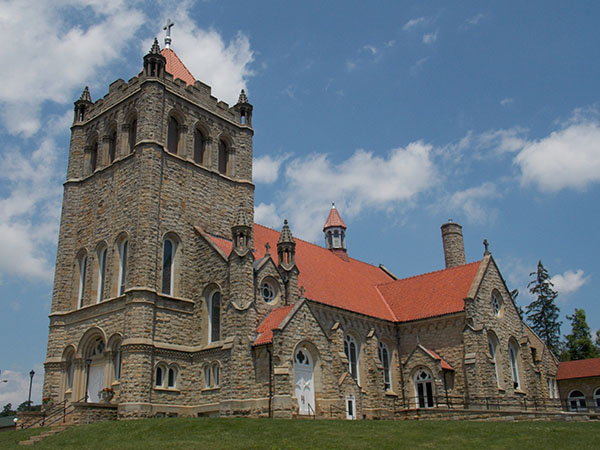People You Might not have read about in the History Books
Father Dimitri Augustine Gallitzin

Father Dimitri Augustine Gallitzin was born Prince Dmitri Gallitzin on December 22nd, 1770 in The Hague, Holland. His family was wealthy and important. His father, Dmitri Alexeievich, was an ambassador for Russia, and his mother, Princess Adelheid Amalie, was the daughter of a famous Prussian general.
While Dimitri was growing up, he often played with Prince William, the future King William I of the Netherlands. When he was two years old, Catherine the Great, Empress of Russia, made him an officer of the guard. (His position was purely honorary; a toddler, even if he is a Russian prince, isn’t much use as a guard.)
Dimitri’s father was Russian Orthodox, and his mother was Roman Catholic, but neither of them took their faith very seriously. Eventually his mother returned to the practice of the Faith. Dimitri decided to enter the Catholic Church, and was confirmed when he was seventeen. He chose Augustine for his confirmation name because his mother was born on the 28th of August, the feast of St. Augustine.
His father was very unhappy about this because, as a Catholic, Dmitri wouldn’t be able to hold a position in Russia or inherit the family estates. He was even more unhappy when he found that Dimitri wanted to become a priest. His father thought that maybe a trip to the United States would distract him. Dimitri left Holland for America in 1792; the United States had only been in existence for 16 years at the time! The trip didn’t get off to a very good start because Dimitri accidentally fell off a dock into the water while boarding his ship in Rotterdam.

Dimitri didn’t want people to realize he was a Russian prince, so he traveled under the name “Augustine Schmettau”, and later changed this to “Augustine Smith”, probably because “Smith” is a lot easier for people to pronounce than “Schmettau”! Many people took simpler names when they came to the United States.
Augustine, as we will now call him, thought the United States was very interesting and sent back letters to his father about his experiences. He didn’t forget about becoming a priest, however, and decided to enter St. Mary’s Seminary in Baltimore, Maryland. He was ordained in 1795. The Diocese of Baltimore, with Bishop John Carrol as bishop, was the only diocese in the United States at the time. Priests had to travel for hundreds of miles to celebrate Mass for the few Catholics.

Father Augustine was given several different assignments. During his time in Conewago Township, he was called on to help the Livingstone family whose house was haunted. After he and another priest celebrated Mass at the house, the haunting stopped. The family later became Catholics and donated land to support a local priest.
Early in his time at Conewago, he traveled 150 miles to visit a dying woman in what was then McGuire’s Settlement. In 1799, he went back to McGuire’s Settlement to found a parish. The church he built was the only Catholic church in the 800 miles between Lancaster, Pennsylvania and St. Louis, Missouri! He often traveled for a week to reach some of his parishioners and frequently had to spend the night sleeping on the floor.
Father Augustine was not only the pastor; he also worked to enlarge and improve the town, which he renamed Loretto after a famous Marian shrine in Italy. He bought land which he divided up and sold cheaply to Catholic immigrants. He also helped them to establish local businesses.
Father Augustine could have become the first Bishop of Detroit, but he preferred to remain with his people in Loretto. He died in 1840, shortly after Easter and was buried near his church. Father Augustine’s original church was replaced by the Basilica of St. Michael the Archangel. His cause for canonization has been opened; he was named Servant of God in 2005.

which replaced Father Augustine’s original Church
Portrait of Father Dimitri Augustine Gallitzin in the public domain. Photo of Basilica of St. Michael the Archangel in Loretto by Farragutful, copyright CC BY-SA 4.0. Portrait of Catherine the Great in the public domain. Portrait of Bishop John Carroll in the public domain.
